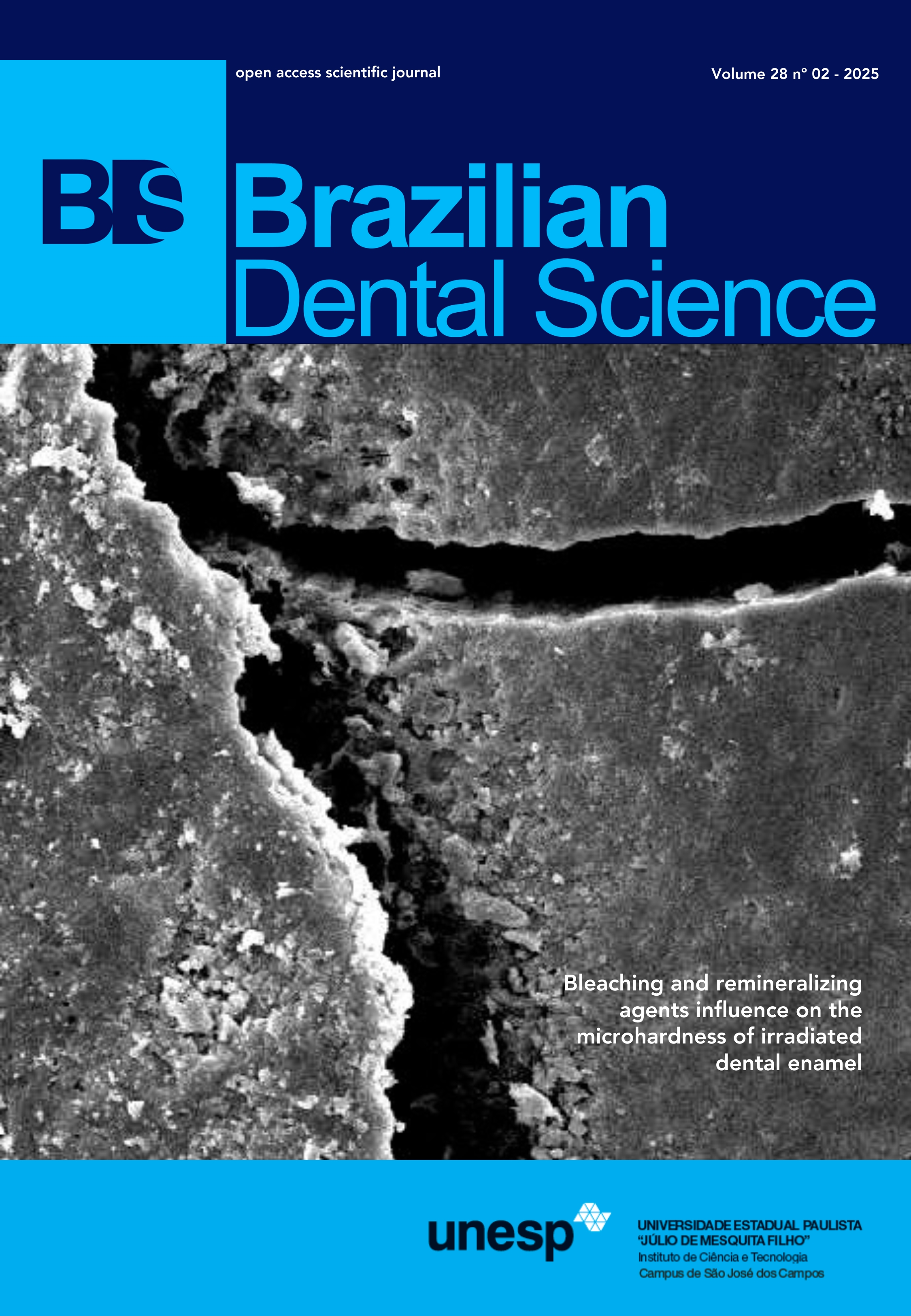Analysis of the efficacy of three cleaning protocols used to remove debris during endodontic treatment: a scanning electron microscopic study
DOI:
https://doi.org/10.4322/bds.2025.e4505Palavras-chave:
Endodontics, Irrigation, Smear layer, Sodium hypochlorite, UltrasoundResumo
Objective: Scanning electron microscopy (SEM) was used to investigate the cleaning and debris removal by passive ultrasonic irrigation (PUI), easy clean (EC), and prophylactic canal brush (PCB) in mandibular premolars. Material and Methods: Forty-eight single-rooted human teeth were divided into three experimental groups (PUI, EC and PCB) and a control group (CON). After access, they were prepared by irrigation with 1% sodium hypochlorite (NaOCl) up to instrument No. 40/.06 and longitudinally scored so that the specimens could be split. The split samples were taken to the SEM to detect the presence of debris and smear layer. Randomized final cleaning protocols were performed, and a second SEM image was taken for comparative analysis between groups. Kruskal-Wallis and then to the Student-Newman-Keuls tests were applied, both with p < 0.05. Results: No protocol was able to completely clean the canals. A significant difference was observed only in the cervical and middle region with PCB compared to the control group; in the other regions there was no significant difference between the techniques (p > 0.05). Conclusion: Under the conditions of the study, all techniques promoted cleaning of the examined regions of the canals, although none of the protocols completely removed debris from the canals. In the cervical third, PCB offered better results than the control.
KEYWORDS
Endodontics; Irrigation; Smear layer; Sodium hypochlorite; Ultrasound.
Downloads
Downloads
Publicado
Como Citar
Edição
Seção
Licença
Copyright (c) 2025 José Valerio da Silva Horta, Ana Grasiela Limoeiro, Suyane Maria Luna-Cruz, Marco Antonio Húngaro Duarte, Elilton Cavalcante Pinheiro Junior, Nilton Vivacqua-Gomes, Bruno Carvalho de Vasconcelos

Este trabalho está licenciado sob uma licença Creative Commons Attribution 4.0 International License.
TRANSFERÊNCIA DE DIREITOS AUTORAIS E DECLARAÇÃO DE RESPONSABILIDADE
Toda a propriedade de direitos autorais do artigo "____________________________________________________________________" é transferido do autor(es) para a CIÊNCIA ODONTOLÓGICA BRASILEIRA, no caso do trabalho ser publicado. O artigo não foi publicado em outro lugar e não foi submetido simultaneamente para publicação em outra revista.
Vimos por meio deste, atestar que trabalho é original e não apresenta dados manipulados, fraude ou plágio. Fizemos contribuição científica significativa para o estudo e estamos cientes dos dados apresentados e de acordo com a versão final do artigo. Assumimos total responsabilidade pelos aspectos éticos do estudo.
Este texto deve ser impresso e assinado por todos os autores. A versão digitalizada deverá ser apresentada como arquivo suplementar durante o processo de submissão.




























